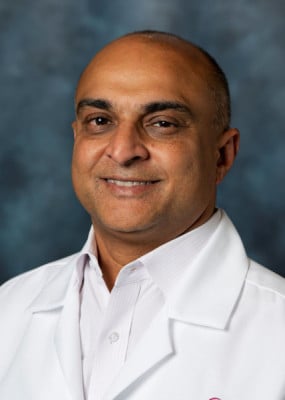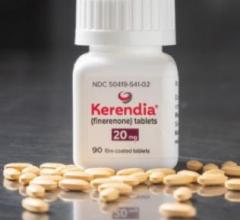
March 18, 2024 — The Smidt Heart Institute at Cedars-Sinai recently became one of four institutions in the U.S. and the first on the West Coast to use a new device aimed at lowering blood pressure in patients with difficult-to-treat hypertension.
Cedars-Sinai is part of a clinical trial testing the safety and efficacy of the device, which is now commercially available after the U.S. Food and Drug Administration approved it in late 2023.

Florian Rader, MD, MSc. Photo by Cedars-Sinai
“This is another tool in our arsenal for patients who have not otherwise been able to control high blood pressure with medication or lifestyle changes,” said Florian Rader, MD, MSc, medical director of the Hypertension Center of Excellence in the Smidt Heart Institute, and the principal investigator of the Cedars-Sinai trial.
For some patients, undergoing this procedure could mean having to take fewer daily medications.
“Patients with treatment-resistant high blood pressure often take upward of four medications to manage their condition,” Rader said. “These patients often can’t control their blood pressure--placing them at significantly higher risk of heart attack, stroke and kidney failure.”
The device delivers ultrasound energy through the arteries of the kidneys to deaden surrounding nerves that are overactive in many people with hypertension. Research shows that reducing the activity of these nerves can help lower blood pressure.
To deliver the ultrasound energy where it needs to go, an interventional cardiologist threads a narrow, flexible tube called a catheter through an intravenous line from the groin into the aorta and into one of the renal arteries. At the tip of the catheter is an ultrasound transducer that is covered by a water-filled balloon to cool and help protect the lining of the renal artery. The catheter is connected to a generator that powers and controls the ultrasound catheter.
Once the catheter is in place, the cardiologist uses a remote control to send the ultrasound energy through the wall of the renal artery to the surrounding nerves. Each delivery of ultrasound energy lasts a few seconds and is typically done about two to three times in different positions in the same artery. The cardiologist then guides the catheter to the renal artery going into the other kidney and repeats the process. When complete, the cardiologist removes the catheter and intravenous line.
The entire procedure takes about an hour.

Suhail Dohad, MD. Photo by Cedars-Sinai
“This is a novel way to target a neurobiological process involved in hypertension for which medications are not always effective,” said Suhail Dohad, MD, an interventional cardiologist with the Smidt Heart Institute who has performed the procedure.
Experts at the Smidt Heart Institute focus on personalizing care.

Christine Albert, MD, MPH. Photo by Cedars-Sinai
“Patients who come to the Smidt Heart Institute have options, and that is the direct result of our passion for studying new treatments for cardiovascular diseases,” said Christine Albert, MD, MPH, chair of the Department of Cardiology and the Lee and Harold Kapelovitz Distinguished Chair in Cardiology.
For more information: www.cedars-sinai.org


 October 28, 2025
October 28, 2025 









